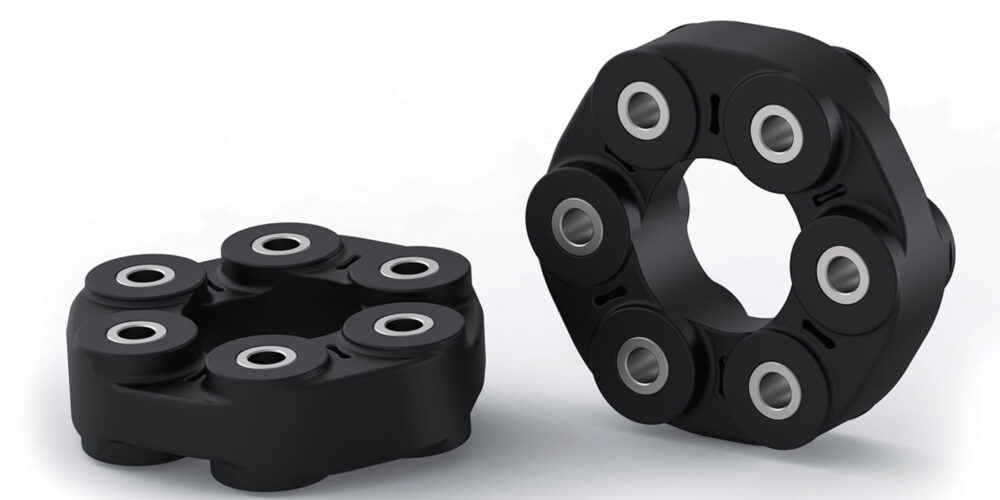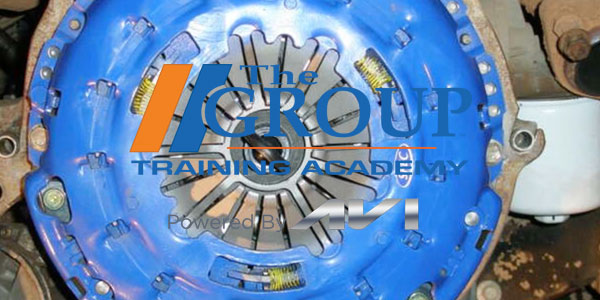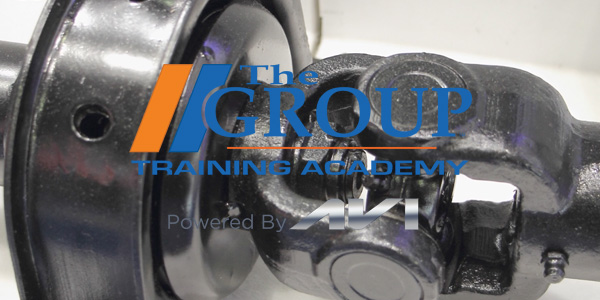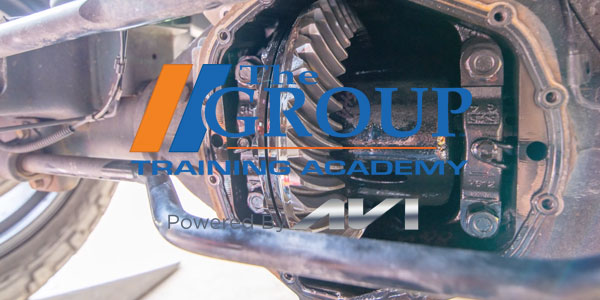The driveshaft coupler might be one of the most overlooked undercar components. It’s known by many other names, such as driveshaft coupling, flexible driveline coupling, driveshaft coupler flex joint and flex disc.
You also might know this part as a “giubo,” a term that was coined by its inventor, Antonio Boschi. You’re most likely to be familiar with it if you have customers who own European luxury vehicles, but you’ll also find it on some domestic applications.
The driveshaft coupler connects the transmission, driveshaft and differential, ensuring a smooth transfer of rotational motion and optimal road performance.
You can think of the driveshaft coupler as a vibration dampener. Whenever the transmission transfers power to the differential, the driveshaft coupler loads up to dampen the vibrations, and it prevents driveline misalignments. On a Mercedes, you’re likely to find two driveshaft couplers: one in the front and one in the back. But you also might encounter this component on a number of other makes and models, including late-model and classic applications.
Driveshaft couplers also can help compensate for misalignments. Vehicles are subject to various forces and flexing while in motion, leading to potential misalignments in the drivetrain. Driveshaft couplers can flex to accommodate these misalignments, ensuring continuous power transmission without undue stress on other components.
The design of a driveshaft coupler must account for several factors, including torque requirements, rotational speeds, temperature ranges and the types of loads (static, dynamic, shock) it will encounter. The materials used – such as rubber, polyurethane or advanced composites – are selected based on their ability to provide flexibility, durability and resistance to wear, heat and chemical exposure.
Rubber is commonly used for its excellent vibration-dampening properties and flexibility, while polyurethane offers greater durability and resistance to oils and chemicals, albeit with a slight increase in transmitted vibration.
Driveshaft couplers tend to last a long time. But, given that they’re called into action every time the throttle opens or closes or a gear change occurs, they’re not invincible. While driveshaft couplers are designed for durability, they are, by nature, wear items. Over time, the stress of torque transmission, exposure to environmental elements and the constant flexing can lead to material degradation.
As a driveshaft coupler wears out, it loses its ability to absorb vibrations and reduce shock forces. When that occurs, drivers and passengers are going to feel it. Symptoms include vibrations or a clunking sound emanating from underneath the vehicle, which might get worse as the vehicle accelerates. A rough shifting feeling when putting the vehicle in drive or reverse is another potential sign of a failing flex disc.
Why are driveshaft couplers more prevalent on European vehicles? Well, there are several explanations. One is that European automakers prioritize precision engineering, ride quality and handling in their vehicle designs. The use of driveshaft couplers aligns with this philosophy, as these components enhance driveline smoothness and absorb vibrations, leading to a more comfortable and refined driving experience. Plus, European drivers tend to have high expectations regarding vehicle dynamics and comfort, and driveshaft couplers ensure smoother power delivery and reduce NVH levels.
Also, European cars – especially luxury and performance models – frequently feature rear-wheel-drive or all-wheel-drive configurations, which inherently require more complex drivetrain layouts. Driveshaft couplers are essential in these setups to manage the alignment and movement between the transmission, driveshaft and differential.













